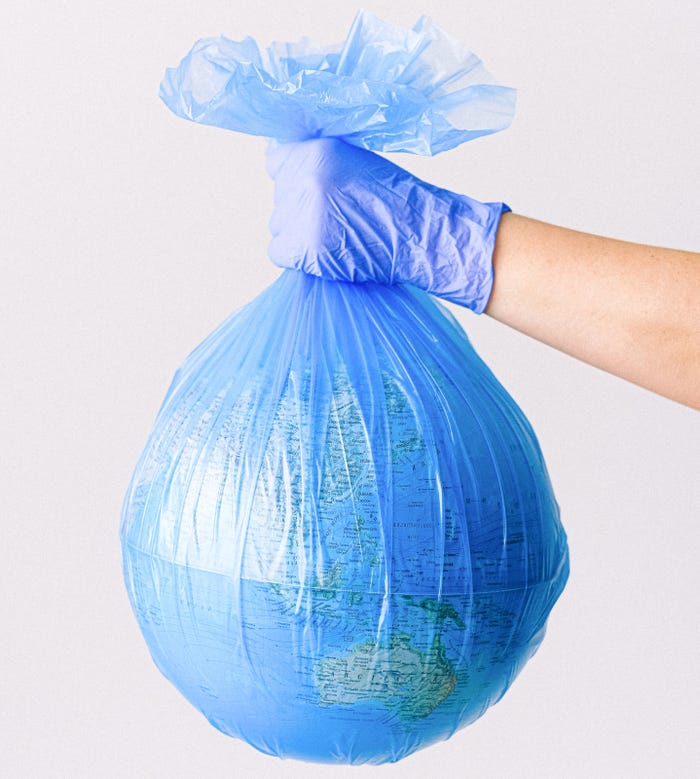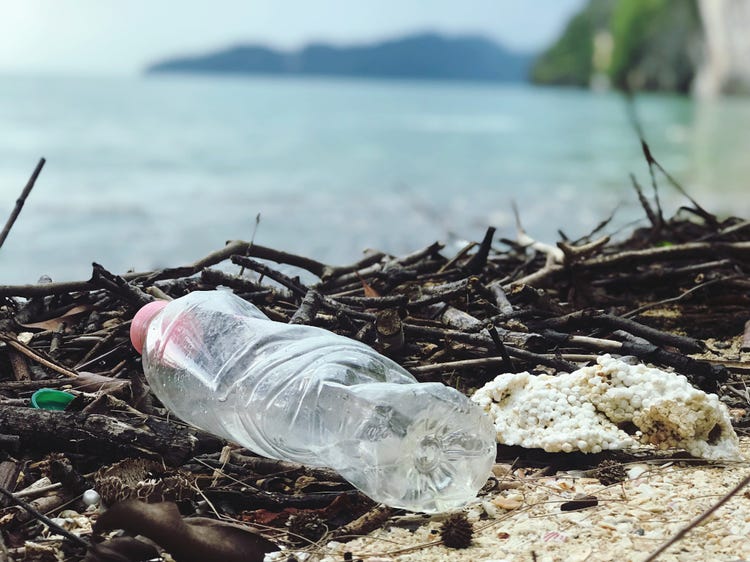When it comes to dealing with an overabundance of plastic waste, there’s no shortage of creative inquiry.

What if shrimp shells could be used to make eco-friendly plastics? At Nile University in Egypt, scientists are doing just that. According to a recent report, “Chitosan is the key component from the shrimp shells used to create eco-plastic. After being dissolved and dried, the plastic can be used to make anything, including packaging. The material also has antibacterial properties. Estimates today suggest Egypt imports around 3,500 tonnes of shrimp annually, which produces about 1,000 tonnes of shells as waste. Making a sustainable product from this waste is a step forward in green packaging and in the circular economy.”
Then there’s the work of Swedish giant IKEA. This company is in the process of swapping out plastic packaging for fungus. An innovation from US firm Ecovative Design, the fungus-based material is biodegradable and easy to recycle, enabling IKEA to make good on its goal to reduce plastic and meet customer demands for sustainable solutions.
At Brooklyn’s Pratt Institute, students worked with researchers to come up with new ways to solve the “how to replace plastic” dilemma. Their efforts were inspired, if not always implementable. “Focusing on the long-lived detritus that typically accompanies take-out meals, students baked 3D-printed straws made of sugar and agar — a gelatinous substance derived from seaweed. They hand-shaped bowls from mycelium, the threadlike roots of mushrooms. One team designed sheets of black plastic that folded into take-out containers … and could be returned to a collection point, sanitized, and reused ad infinitum by a consortium of take-out chains.”
Most of the above innovations are still in the theory stage; researchers pulling materials from nature to reimagine a future that is less damaging to the environment. Although the efforts are laudable, we still have a way to go before plastic becomes a thing of the past.
Replacing plastic is not an easy fix.
In 2019, National Geographic had this to say, “Plastic is quite good at what it does, which makes replacing it so devilishly difficult.” One example is a legacy juice brand that switched from plastic bottles to pouches. “Today the pouch is ubiquitous, holding everything from tuna to tomato paste, pet food to pickles.”
Brands value pouches for a number of reasons. They offer weight savings of more than 78% compared to other packaging materials. Less weight translates to a lower carbon footprint throughout the supply chain. But brands that use pouches quickly discover that one sustainability benefit can easily be replaced by a different sustainability problem. Pouches, it turns out, are kryptonite to recycling companies, because they can’t separate the material’s heterogenous layers.

In this same National Geographic report, authors offer a cautionary note: “Shrink a cucumber in polyethylene and its shelf life stretches from 3 days to 14. The wrap, however, may last more than a century.”
If the sheer versatility of plastic makes it difficult to envision an economy without it, our recent pandemic has only increased its usage.
How has COVID-19 changed the conversation?
Major trend spotter McKinsey & Co. had this to say, “It seems likely that concerns about hygiene and food safety in the context of the COVID pandemic might become a higher priority while the sustainability performance of different packaging substrates could become a lower priority. Because of the pandemic, there is a new appreciation by consumers and industries of the hygiene advantages plastic packaging can offer that seems to be outweighing concerns about recyclability and plastic-waste leakage into the environment.”

How big a role does plastic play in the big picture?
The question is whether or not we should eliminate plastic … maybe, maybe not. Do we have a plastic problem, a recycling problem, or a people problem? I believe the answer is “yes” to all three. I believe that the recycling system may be the biggest part of the problem, but, when fixed, it will have significant impact on the material supply chain and drastically change consumer habits.
How to get consumers to change their behavior around recycling? Make ’em an offer they can’t refuse.
For those in the Boomer generation, many will say that buying music was a costly habit when they were kids. You’d have to spend $20 for an album just to get one song you liked. Along came iTunes, followed by streaming platforms. Now everybody has self-selected playlists and systems like Alexa that will play songs on demand.
Digital technology is making all things possible. Can it change the way we recycle?
Technology, like artificial intelligence (AI), can enable smarter sorting.
TOMRA is a leading global consortium of like-minded thinkers and innovators all focused on one thing — how to provide technology-led solutions that enable the circular economy with ground-breaking collection and sorting systems designed to improve waste recovery and minimize the impact on the environment.
In one of TOMRA’s ebooks, Harnessing the Potential of AI, the authors note, “The combination of massive amounts of data and significantly improved computer capabilities opens the opportunity for solving complex sorting problems. Deep learning, a powerful component of AI is a class of machine-learning algorithms that analyze multiple layers to progressively isolate high-level features from raw input.”
In other words, with deep learning, recycled products can be sorted faster than ever before. By combining the power of deep learning and advanced cameras and infrared sensors, solutions to sorting challenges are being found where none existed before.
This is just one area of rapid advancement in the works as we look at the future of plastic. But no matter how sophisticated we get with recycling technology, there still remains the question — will people change their behavior?
Can humans change their nature?
Full transparency: My firm, FORCEpkg, is in the business of branding and packaging design. It’s our job to create the most sustainable and cost-effective packaging solutions for the brands we serve. Plastic is one of the instruments in our toolbox. Brands have a lot to consider, such as product protection, child resistance, ability to communicate with the consumer, and recyclability. In that area, plastic has made strides — but human nature hasn’t really kept up.
I run a design agency populated in large part by Millennials and am the parent to Millennial and Gen Z kids. I also teach packaging design at a college. So, I am a witness to recycling on a personal and a professional level. When I ask my packaging classes how much “recycled” and “recyclable” matter to them, I get a mixed response. Certainly, the number of those who say it does is increasing, but it’s nowhere near a majority. And when I observe their own behaviors in disposing their trash, let’s just say “the spirit is willing, but the flesh is weak.”

Research backs this up. A February 2020 piece in Forbes sited research that showed “when it actually comes to reducing or reversing our carbon footprints, evidence shows older age groups are way ahead of Millennials and Gen Z.” Some data points from that study conclude:
• Recycling: 84% Boomers vs. 54% Millennials and Gen Z
• Avoiding single use plastic items: 66% Boomers vs. 55% Millennials and Gen Z
• Only eating seasonal fruits and veggies: 47% vs. 33%
Convenience is a way of life for consumers.
The difficulty that many find when it comes to recycling plastic is that behavior has more to do with convenience than it does with conscience. Nobody wants to be the person responsible for the straw stuck up the nose of the sea turtle. But when it comes to everyday habits, it’s not the sea turtle most people are thinking about.
A recent article in Ad Age focuses on brands that are thriving during the COVID-19 outbreak. Among those showcased are Lysol, Clorox, Purell, Scotch Brite and the iconic Campbell’s soup. All have been on the receiving end of criticism from the environmental movement, but during the current pandemic, safety is winning out over other concerns.
On the flip side, we can’t discount those nation-size floating islands of plastic. Is it the plastic or human behavior that needs to change? In my opinion, we must find ways to address the human error and convenience components of our behavior. COVID-19 is forcing us to examine the new impacts we are having on the environment as we struggle with how to dispose of the massive amounts of personal protective equipment (PPE), masks, latex gloves, and disposable cleaning products.
About the Author(s)
You May Also Like




